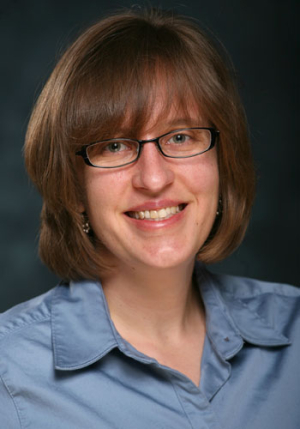One of the Cullen College of Engineering’s newest professors has co-authored an article appearing in one of the nation’s most prestigious scientific journals.
The paper, co-written by Jacinta Conrad, assistant professor in the college’s Department of Chemical and Biomolecular Engineering since fall 2010, is set to appear in an upcoming issue of the Proceedings of the National Academy of Sciences and is currently available online.
The piece describes a newly found method of bacteria motility, or movement, using hair-like appendages called pili.
Bacteria typically use these pili to pull themselves in a given direction, but recent research has shown they can be used for other types of movement. Last October, for example, Conrad and her collaborators published an article in the journal Science that showed bacteria use pili to pull themselves upright in order to sense their environment and “walk.”
The latest paper builds on that research. Using sophisticated algorithms to track bacterial movement, Conrad and her collaborators found the organisms use pili to “slingshot” themselves in order to change their orientation and move in different directions.
They achieve this by having multiple pili pulling in different directions. Some pili then release from the surface, causing the bacteria to whip around into a new position. “You can think of it as pulling with multiple grappling hooks. If you let one go you’ll re-equilibrate to the sum of the forces from those that are still attached,” said Conrad. This method allows bacteria to move 20 times more quickly than if they simply used their pili to pull themselves along.
In addition to being extremely efficient, Conrad and her co-authors believe this quick movement serves an additional purpose.
One of the main reasons bacteria move on surfaces is to form biofilms, surface-associated colonies of bacteria that are shielded by an extracellular matrix of polymers. Before they form colonies, bacteria excrete the polymers that serve as the basis of these biofilms.
The suspension of polymers in water is very thick and sticky, though, making it difficult for bacteria to move through it. The “slingshot” motion seems to mitigate this problem. Conrad and collaborators hypothesize that this quick movement thins the polymer-water suspension, much like ketchup flows when its bottle is squeezed. As a result, the organisms are able to move more freely.
Those aren’t the only notable findings from the paper. Conrad and her co-authors also found evidence that each individual bacterium moves in its own unique way. She speculates that scientists could take advantage of these identifying movements in any number of ways, such as using them to as diagnose or track the spread of diseases.
The most immediate practical ramifications of this work, however, lie in preventing the formation of problematic biofilms. These bacteria colonies can form on food processing equipment, leading to widespread outbreaks of food-borne illnesses. They disrupt the flow of liquid in water, sewage and oil pipelines and increase drag on marine vessels, slowing ships down and wasting fuel.
Uncovering how these bacteria move, said Conrad, should help in finding ways to stop colonies from forming.
“The motivation for this work is to understand how bacteria move on surfaces. If we do that, we can understand the methods that prevent them from moving and ultimately colonizing,” Conrad said.
Conrad’s co-authors on this article were senior author Gerard Wong, professor of bioengineering at the University of California, Los Angeles; and two members of his research group, Maxsim Gibiansky and first author Fan Jin.
